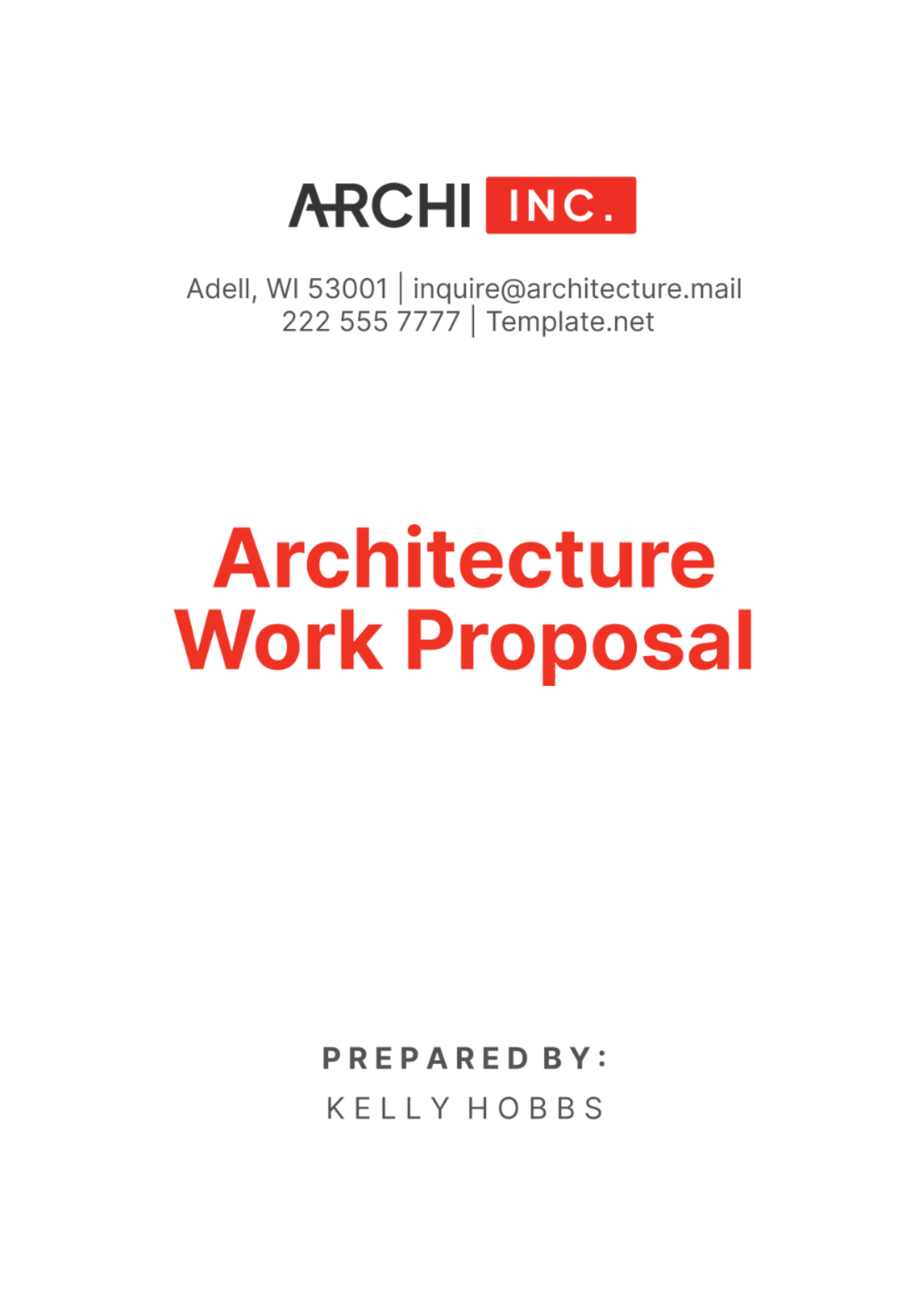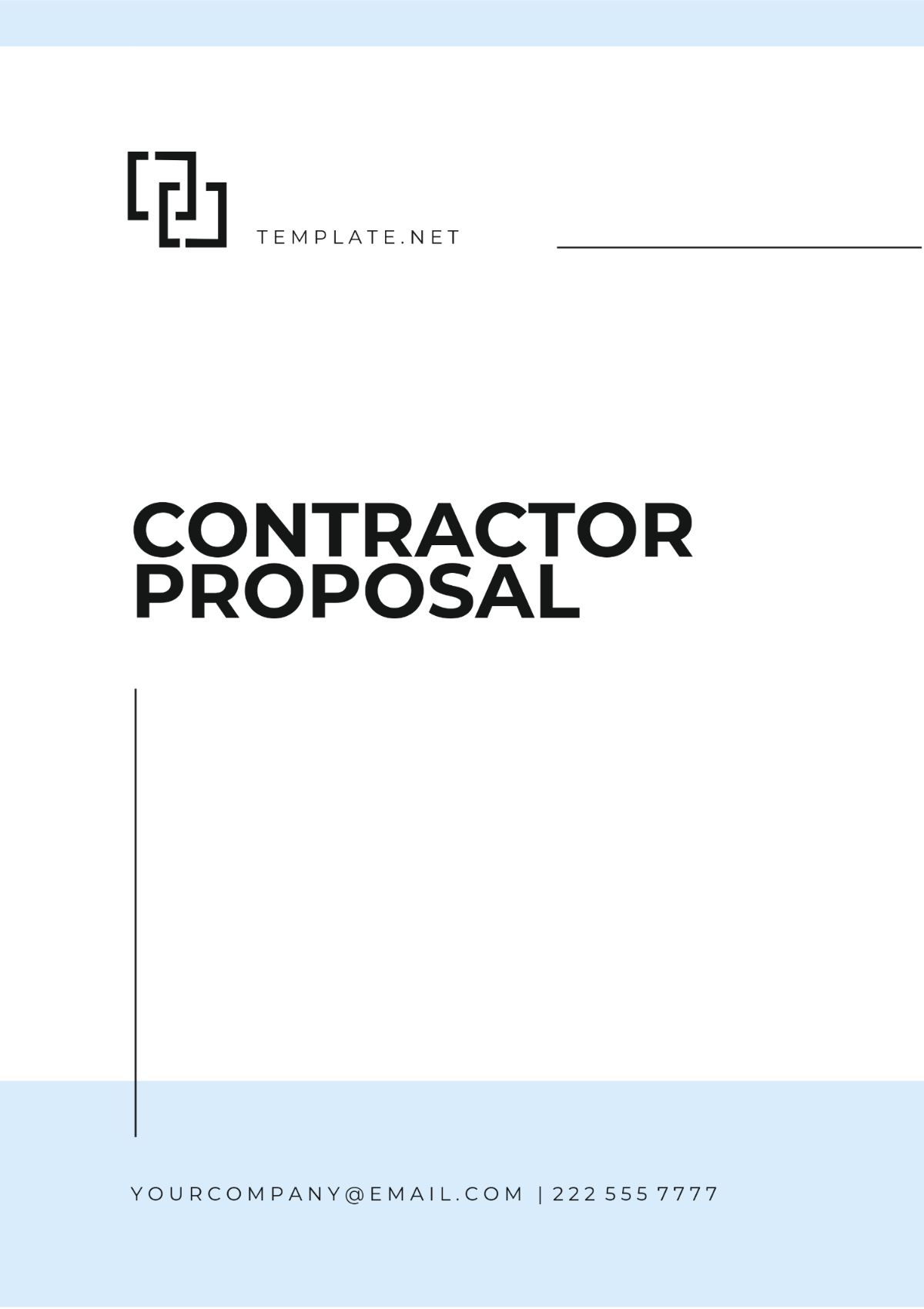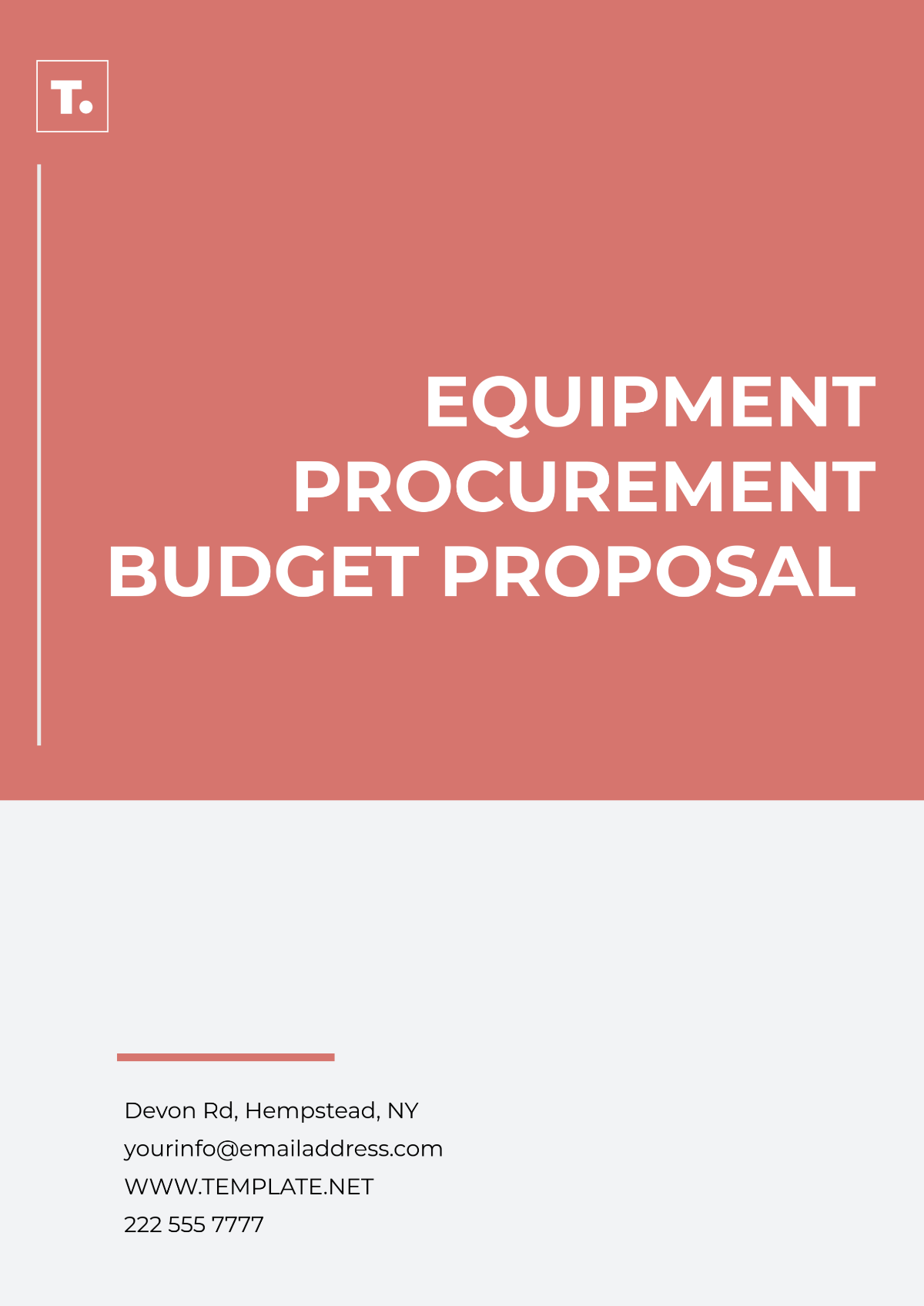B2B Proposal
1. Executive Summary
1.1 Introduction to [Your Company Name]
[Your Company Name] is a forward-thinking leader in the [technology] industry, specializing in providing innovative software solutions designed to help businesses increase operational efficiency, reduce costs, and enhance productivity. Founded in [2050], we have become a trusted partner for over [500] businesses across [15] different countries, offering scalable and customizable solutions that drive growth and profitability. Our team of more than [200] experts works closely with clients to understand their unique needs and deliver solutions that make a measurable difference in their operations.
Our core focus is on providing cloud-based solutions for supply chain management, enterprise resource planning (ERP), and business intelligence (BI). We have worked with a diverse range of clients, including large multinationals such as GlobalCorp and fast-growing startups like TechFlow. Through our deep expertise in technology and business processes, we empower companies to reduce waste, optimize operations, and scale more efficiently.
1.2 Purpose of the Proposal
This proposal outlines a strategic partnership between [Your Company Name] and [Client Name] to improve operational efficiency, reduce costs, and enhance customer service through the integration of our enterprise resource planning (ERP) software. Our team has analyzed your current operational workflow, and we believe that our ERP system will allow you to centralize your business processes, resulting in faster decision-making, improved data accuracy, and more effective use of resources.
The purpose of this proposal is to present a comprehensive plan that details how we will implement our solution, the expected outcomes, the timeline for delivery, the cost involved, and the projected return on investment (ROI). By the end of this proposal, you will have a clear understanding of the strategic benefits of working with us and how our solutions will help you achieve your long-term business goals.
1.3 Benefits of Working with [Your Company Name]
Partnering with [Your Company Name] provides a wealth of benefits that will position your company for sustained growth. The key benefits we offer include:
Cost Savings: Our ERP system will reduce your operational costs by automating manual processes and optimizing resource allocation. Companies that have implemented our solution have seen an average cost reduction of [25]% within the first year. For example, [Client A], a manufacturing company, saved [$500,000] annually by streamlining its inventory management using our system.
Scalability: Our solutions are built to grow with your business. As your operations expand, we can scale our solutions without disruption. Clients like RetailX have successfully scaled their operations to [10] new countries without experiencing any major downtime or operational hurdles, leveraging our scalable solutions.
Increased Efficiency: Our ERP system eliminates inefficiencies by integrating all of your business functions into a single platform, resulting in a [35]% increase in operational productivity. For instance, [Client B], a logistics provider, reduced its order fulfillment time by [40]% and improved employee productivity by [30]% through automation and centralization of their data.
Customization: We understand that no two businesses are alike. Our ERP solution can be fully customized to fit the unique needs of your company, whether it’s adapting the software to your current workflows, integrating with other third-party systems, or designing custom dashboards to monitor key performance indicators (KPIs). Our customization efforts have resulted in a [100]% satisfaction rate among clients who required tailored solutions.
Expert Support: With our dedicated technical support and account management teams, you’ll have access to real-time assistance whenever you need it. Our average response time for critical support requests is [2] hours, and our client satisfaction rating for customer support is consistently above [95]%.
1.4 Proposal Overview
This proposal will provide a comprehensive roadmap for how [Your Company Name] will implement the ERP system for [Client Name]. The document includes:
Company Background: A detailed overview of [Your Company Name], our capabilities, and the solutions we offer.
Proposed Solutions: A breakdown of our ERP solution, its components, and how it aligns with your business needs.
Expected Outcomes and Benefits: Projected results of the solution, including cost savings, efficiency improvements, and ROI.
Pricing and Financial Projections: Clear breakdown of the pricing structure, expected financial benefits, and a projection of the return on investment over the next [3] years.
Implementation Timeline: A step-by-step timeline for the deployment of our solution, from initiation to go-live.
Case Studies/References: Real-world examples of how our solutions have benefited similar businesses in your industry.
Terms and Conditions: Clear and concise terms of service, including payment schedules, support agreements, and confidentiality clauses.
2. Company Background and Expertise
2.1 Company Overview
Founded in [2050], [Your Company Name] has rapidly grown to become a leader in the technology space, providing state-of-the-art business solutions to companies in industries such as manufacturing, retail, logistics, and healthcare. Our headquarters are based in [City, State], with regional offices in [Country 1], [Country 2], and [Country 3]. Over the last [14] years, we have built a strong reputation for delivering reliable, efficient, and cost-effective solutions that meet the needs of businesses worldwide.
Our diverse portfolio includes products and services such as enterprise resource planning (ERP), customer relationship management (CRM), data analytics platforms, and business automation solutions. Our clients range from small businesses with fewer than [50] employees to large multinational corporations with over [10,000] employees. We are proud of our commitment to customer success, having maintained a client retention rate of [90]% over the past [5] years.
2.2 Expertise and Industry Knowledge
At [Your Company Name], our expertise lies not only in our technology but also in our deep understanding of the challenges businesses face in today’s competitive market. With a team of over [200] professionals, we are committed to staying ahead of industry trends, constantly improving our solutions, and offering businesses the tools they need to succeed. Our technology experts, business analysts, and customer success managers are continuously trained on the latest advancements in software, cloud computing, and automation.
We are particularly experienced in:
Enterprise Resource Planning (ERP): We specialize in designing, implementing, and customizing ERP systems that help businesses centralize their operations, streamline workflows, and enhance data-driven decision-making.
Automation Solutions: By integrating robotic process automation (RPA) and artificial intelligence (AI) into business processes, we help clients reduce manual intervention, cut costs, and enhance operational speed.
Data Analytics: Our data analytics solutions help businesses gather, analyze, and visualize key metrics to drive smarter business decisions.
2.3 Key Personnel
Our leadership team is composed of seasoned professionals who bring a wealth of experience to the table. Some of the key members of our team include:
[John Doe], CEO: With over [20] years in the technology industry, John has played a pivotal role in driving the company’s expansion into international markets. He has led [Your Company Name] through periods of growth and technological advancements, ensuring that we remain at the forefront of innovation.
[Jane Smith], COO: Jane brings [15] years of operational experience in implementing large-scale business solutions. She oversees the successful delivery of projects and ensures our clients receive the best possible service.
[Alice Johnson], CTO: Alice leads our research and development efforts, ensuring that our solutions are built using cutting-edge technology. With a background in software engineering, she ensures that our products are not only innovative but also secure and reliable.
[Bob Brown], VP of Sales: Bob has [25] years of experience in enterprise sales and has been instrumental in driving our sales strategy. His customer-centric approach has helped [Your Company Name] forge lasting relationships with clients worldwide.
3. Proposed Solutions
3.1 Overview of Solutions Offered
At [Your Company Name], we offer a wide range of solutions designed to help businesses optimize operations, reduce costs, and improve decision-making. Our primary offering to [Client Name] is our cloud-based ERP solution, which centralizes key business processes, including finance, inventory management, HR, and customer relationship management. Additionally, we provide analytics tools to track key performance metrics and identify opportunities for improvement.
Our ERP system is scalable, meaning it can easily accommodate your business’s growth, allowing you to expand without disruption. The solution includes:
Cloud-Based Deployment: Our ERP system is deployed in the cloud, providing real-time access to your data from anywhere, at any time. This allows for improved collaboration and decision-making.
Data Integration: We ensure that your existing data sources are integrated seamlessly into the new system, allowing for a smooth transition with minimal downtime.
Mobile Access: Our system is fully mobile-optimized, enabling your team to access key data on the go, improving productivity and reducing response times.
3.2 Detailed Description of Solutions
3.2.1 ERP System
Our flagship ERP system is a comprehensive software solution designed to streamline all aspects of business operations. The ERP system includes:
Core Modules: Financial management, procurement, inventory control, human resources, and customer relationship management (CRM).
Features:
Real-Time Reporting: Access to real-time dashboards and custom reports that allow your team to make informed decisions quickly.
Automation: Streamlines business processes by automating routine tasks, reducing human error, and increasing operational efficiency.
Mobile Optimization: Fully functional on smartphones and tablets, ensuring that your team can access key data from anywhere.
3.2.2 Data Analytics and Business Intelligence
Our data analytics solution offers a comprehensive suite of tools designed to turn your business data into actionable insights. Features include:
Predictive Analytics: Leverages machine learning algorithms to forecast business trends and performance.
Custom Dashboards: Tailored reporting dashboards that display critical business metrics in real-time.
Integration with ERP: Direct integration with your ERP system for a complete, data-driven view of your business.
3.3 Technology Stack and Integration
Our ERP system is built on a robust, cloud-based technology stack using the latest in software development practices. It includes:
Cloud Hosting: Hosted on Amazon Web Services (AWS), providing scalability and security.
Database: PostgreSQL for relational database management, ensuring fast data retrieval and security.
APIs: Our system can integrate with other third-party software such as CRM tools, marketing platforms, and accounting software, ensuring a seamless data flow across your organization.
Security: We use SSL encryption, multi-factor authentication (MFA), and regular security updates to ensure the highest level of data protection.
3.4 Customization and Tailoring
We understand that each business has unique needs, which is why we offer customization services for our ERP system. Our customization options include:
Workflow Customization: Adapting the system to mirror your specific business processes, such as inventory management or approval workflows.
Report Customization: Designing custom reports and dashboards to track your business’s specific KPIs, such as inventory turnover or order processing times.
User Interface Customization: Modifying the look and feel of the user interface to match your company’s branding.
4. Expected Outcomes and Benefits
4.1 Key Performance Indicators (KPIs)
The effectiveness of the ERP system will be measured by the following key performance indicators (KPIs):
Cost Savings: We expect a [20]% reduction in operational costs within the first [12] months through automation and better resource management.
Efficiency Gains: Aiming for a [30]% increase in overall efficiency, especially in inventory and order processing.
Customer Satisfaction: We anticipate a [15]% improvement in customer satisfaction due to faster order fulfillment and real-time data access.
Revenue Growth: We project that [Client Name] will experience a [10]% increase in revenue due to improved decision-making and operational efficiency within the first [2] years.
4.2 Projected ROI
We project a significant return on investment (ROI) from implementing our ERP system. Based on similar implementations, clients typically see an ROI of [150]% within [3] years. For instance, [Client C], a leading retail company, experienced an ROI of [180]% within [2] years due to improvements in operational efficiency and better inventory management. Below is a table showing the projected ROI over [3] years for your company:
Year | Revenue Impact | Cost Savings | ROI |
|---|---|---|---|
Year 1 | $1,000,000 | $300,000 | 150% |
Year 2 | $1,200,000 | $350,000 | 175% |
Year 3 | $1,400,000 | $400,000 | 200% |
4.3 Case Studies/References
Our case studies demonstrate the proven success of our solutions:
Case Study 1: [Client A]: A manufacturing company implemented our ERP system and saved over [USD $500,000] annually. They also saw a [40]% reduction in order fulfillment time and a [30]% improvement in employee productivity.
Case Study 2: [Client B]: A logistics company used our analytics solution to enhance its delivery route planning, resulting in a [25]% decrease in fuel costs and a [20]% increase in delivery speed.
5. Pricing and Financial Projections
5.1 Pricing Structure
At [Your Company Name], we aim to provide transparent and flexible pricing models that align with the specific needs of your business. Our pricing structure is designed to accommodate businesses of varying sizes and scopes, from small to medium-sized enterprises (SMEs) to large multinational corporations. The costs associated with our proposed ERP system and associated services are outlined below.
Our pricing is broken down into three categories: software licensing, system implementation, and ongoing support. These are outlined in the following table:
Solution | Pricing per Month | Pricing per Year |
|---|---|---|
ERP System | $5,000 | $60,000 |
Data Analytics Solution | $2,000 | $24,000 |
Customization Fees | One-time $10,000 | N/A |
Ongoing Support & Maintenance | $1,500 | $18,000 |
ERP System: The ERP system price covers the core software licensing costs. The monthly price includes access to all core modules, updates, and cloud hosting.
Data Analytics Solution: This price is for the optional integration of our business intelligence tools, which allow for advanced reporting, predictive analytics, and data visualizations that can give your team a competitive edge.
Customization Fees: Customization of the ERP system to meet your specific needs, such as integrating with legacy systems, creating custom workflows, and adapting the interface for specific processes, are included in the one-time setup fee.
Ongoing Support & Maintenance: This cost covers our comprehensive support services, including customer support, system updates, and performance optimizations. Our average client receives [100]+ hours of support per year.
5.2 Payment Terms
We offer a variety of payment structures depending on the size and needs of the client. Below are the suggested payment terms for the implementation of our ERP system and supporting services:
Initial Payment: [30]% of the total contract value is due upon signing the agreement. This payment will allow us to begin the discovery and planning phase.
Progress Payments: A further [30]% is due at the end of the system configuration and testing phase, where we’ll have your team thoroughly test the system to ensure everything is aligned with your specific business processes.
Final Payment: The remaining [40]% of the contract value is due upon the successful deployment of the ERP system, making it fully operational in your organization.
Late Payment Fees: Payments that are overdue by more than [30] days will incur a late fee of [5]% of the total amount due. This fee is charged monthly until the outstanding payment is received.
For clients interested in extending their relationship with us for a long-term partnership, we offer the possibility of annual payment discounts. Companies committing to a [2]-year term upfront will receive a [10]% discount on the total cost of the first year’s payment.
5.3 Financial Projections
The goal of this proposal is not only to provide a solution to your operational needs but also to generate significant return on investment (ROI) through cost savings, efficiency improvements, and enhanced revenue generation. Based on our experience with similar clients, we anticipate that [Client Name] will see a measurable ROI over the next [3] years.
The following table outlines projected financial gains for the first three years post-implementation, focusing on revenue impact, cost savings, and overall ROI:
Year | Revenue Impact | Cost Savings | Total Financial Impact | ROi |
|---|---|---|---|---|
Year 1 | $500,000 | $100,000 | $600,000 | 150% |
Year 2 | $600,000 | $150,000 | $750,000 | 175% |
Year 3 | $700,000 | $200,000 | $900,000 | 200% |
Revenue Impact: As the system streamlines operations, we expect to see an increase in revenue due to quicker turnaround times, better customer satisfaction, and more effective management of resources.
Cost Savings: We anticipate savings from reduced operational inefficiencies. For example, [Client X] saw a [20]% reduction in logistics costs through better inventory management after implementing our ERP system.
ROI: The ROI calculation takes into account both direct financial impacts (revenue increases and cost savings) and indirect factors (such as reduced manual work and faster decision-making).
The long-term benefits far outweigh the initial investment, with a projected ROI of [200]% by the end of Year [3].
6. Implementation Timeline
6.1 Project Phases
The implementation of the ERP system is a collaborative process that will be carried out in well-defined phases. These phases ensure that the solution is carefully tailored to meet your organization’s needs and that your team is fully equipped to leverage the new system effectively.
Phase | Timeline | Key Activities |
|---|---|---|
Phase 1: Discovery & Analysis | Month 1 | System requirements gathering, detailed needs analysis, and project scoping. |
Phase 2: System Configuration | Month 2–3 | Customization of the system, integration with current tools, and setup of core modules. |
Phase 3: Testing | Month 4 | System testing, validation, and troubleshooting with your internal team. |
Phase 4: Training & Onboarding | Month 5 | Comprehensive training sessions for your staff, including training on using dashboards, reporting tools, and basic troubleshooting. |
Phase 5: Deployment & Go-Live | Month 6 | Full-scale system deployment, live operation, and initial post-launch support. |
Phase 6: Ongoing Support | Ongoing | Regular system updates, quarterly performance reviews, and customer support. |
Each phase is meticulously planned to ensure the highest level of customization, accuracy, and alignment with your business goals. Our project management team will work closely with your key stakeholders to ensure seamless execution and minimal disruption to your daily operations.
6.1.1 Phase 1: Discovery & Analysis
The first phase is critical for understanding your business needs and designing a solution that is truly tailored to your operations. During this phase, we will:
Conduct interviews with key stakeholders to gather information on existing pain points and inefficiencies.
Analyze your current workflows, IT infrastructure, and business goals.
Document specific customization needs, third-party integrations, and reporting requirements.
By the end of this phase, we will have a clear and comprehensive understanding of your requirements and be able to present a finalized scope of work for approval.
6.1.2 Phase 2: System Configuration
In this phase, we configure the ERP system to fit your exact business needs. We work closely with your team to:
Customize workflows and processes according to your operational requirements.
Set up integrations with your existing software systems, such as accounting or CRM tools.
Configure dashboards and reporting systems to ensure that all critical KPIs are easily accessible.
6.1.3 Phase 3: Testing
After configuration, thorough testing is necessary to ensure the system is fully functional and ready for deployment. This includes:
Running test scenarios to ensure all processes are automated as expected.
Ensuring that integrations are working smoothly.
Conducting user acceptance testing (UAT) with your team to ensure the system meets your needs.
6.1.4 Phase 4: Training & Onboarding
Proper training is crucial for the successful adoption of any ERP system. In this phase, we will:
Provide training sessions for all users, focusing on both basic and advanced features of the system.
Offer customized training on how to generate reports, analyze data, and optimize system use.
Provide a comprehensive user manual and access to our knowledge base for future reference.
6.1.5 Phase 5: Deployment & Go-Live
After testing and training, we will deploy the ERP system fully. This is when your business will start operating on the new platform. During this phase, we will:
Transition your data to the new system and ensure everything is migrated accurately.
Offer on-site or remote support to address any immediate issues.
Monitor system performance to ensure smooth operations.
6.1.6 Phase 6: Ongoing Support
Once the system is live, we provide ongoing support to ensure it continues to meet your needs:
Regular system updates and upgrades to ensure the software remains secure and up-to-date.
Quarterly reviews of system performance and optimizations.
Dedicated support channels for troubleshooting and helpdesk queries.
6.2 Risk Management and Mitigation
While we strive for smooth and efficient implementation, it’s important to consider potential risks. We will take proactive steps to mitigate these risks throughout the project lifecycle:
Risk: Data Migration Issues: Data loss or corruption during migration can delay implementation. Mitigation: We will perform multiple data migration tests to ensure accuracy.
Risk: User Adoption: Employees may be resistant to adopting new systems. Mitigation: We will conduct comprehensive training and offer ongoing support.
Risk: Integration Challenges: The ERP system may face compatibility issues with existing software. Mitigation: Our team will conduct a full systems audit before implementation to identify potential integration challenges.
We will also work closely with your project managers to ensure that the timeline and budget are adhered to, while ensuring that any unforeseen challenges are addressed quickly and efficiently.
7. Conclusion
[Your Company Name] is confident that our ERP solution will provide exceptional value to [Client Name]. We believe that our tailored solution will not only streamline your business operations but also unlock new opportunities for growth and cost-saving. By leveraging our advanced system features, ongoing support, and expertise, [Client Name] will be positioned for continued success in the years to come.
The benefits of implementing this ERP system extend beyond just operational improvements. Our solution offers measurable financial impact, including revenue growth, significant cost reductions, and substantial ROI in just a few short years.
We are excited about the opportunity to work with [Client Name] and help your business thrive in an increasingly competitive market. We are available to discuss the next steps, provide clarifications on any aspects of this proposal, and address any additional questions you may have.
We appreciate your consideration of [Your Company Name] as your trusted partner, and we look forward to embarking on this journey together.
Thank you for your time and attention.
Sincerely,
[Your Name]
[Your Title]
[Your Company Name]

















































